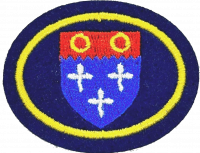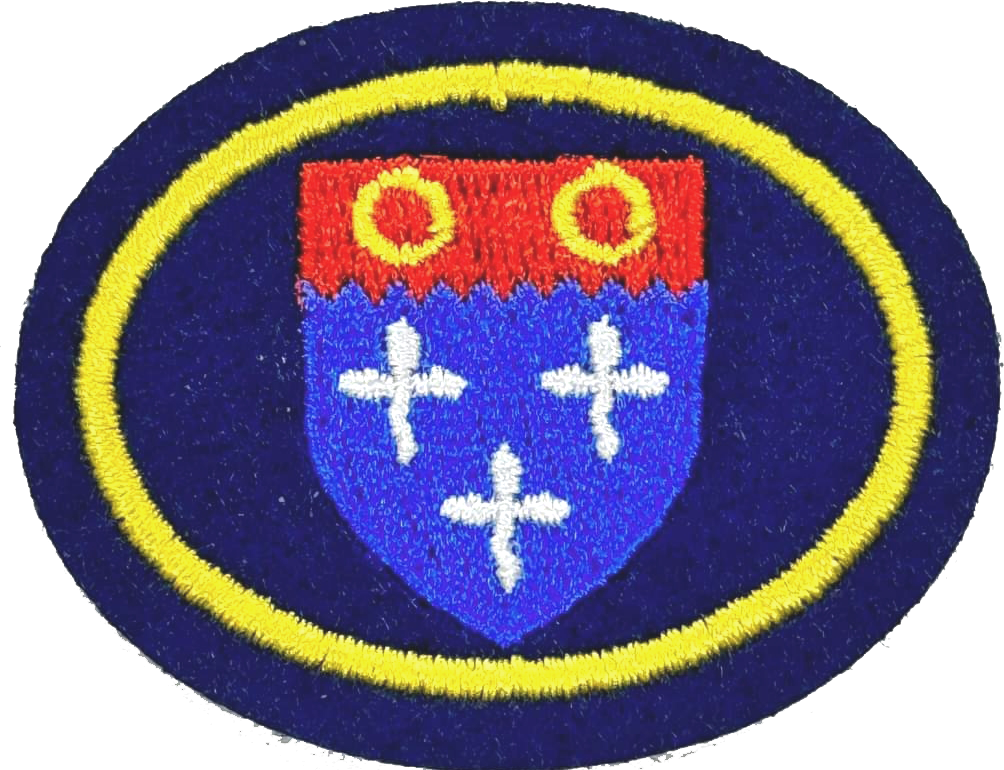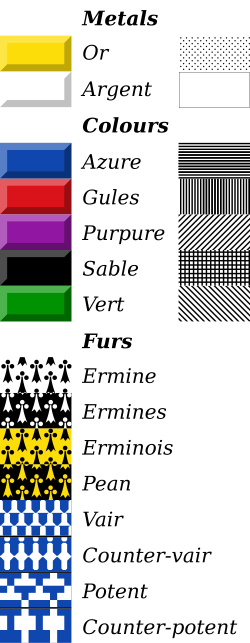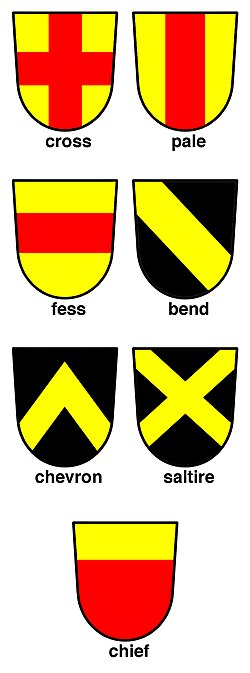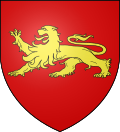Difference between revisions of "AY Honors/Heraldry/Answer Key/es"
(Created page with "</noinclude> <!-- 1. ¿Cómo empezó la heráldica? -->") |
(Updating to match new version of source page) |
||
| (2 intermediate revisions by 2 users not shown) | |||
| Line 6: | Line 6: | ||
<noinclude></noinclude> | <noinclude></noinclude> | ||
<!-- 1. ¿Cómo empezó la heráldica? --> | <!-- 1. ¿Cómo empezó la heráldica? --> | ||
| + | |||
| + | <div lang="en" dir="ltr" class="mw-content-ltr"> | ||
| + | To overcome this, the practice of painting unique combinations of colours, shapes and animals, called their 'arms', on their shields and banners came into being. Only one person was allowed to use these arms, so when people saw a knight wearing them in a battle or tournament, they could tell who he was. | ||
| + | </div> | ||
| + | |||
| + | <div lang="en" dir="ltr" class="mw-content-ltr"> | ||
| + | Eventually the symbols migrated to battlefield shields and from there to the surcoats of men in armour, from which we may derive the term “coat of arms”. | ||
| + | </div> | ||
| + | |||
| + | <div lang="en" dir="ltr" class="mw-content-ltr"> | ||
| + | Each coat of arms should be unique. The arms should be distinguishable at a distance, so the majority of components should be large, simple and composed of a very few tinctures (colours). The main charge (design on the shield) should cover its field (the whole of the space available on the shield). | ||
| + | </div> | ||
| + | |||
| + | <div lang="en" dir="ltr" class="mw-content-ltr"> | ||
| + | Heraldry is about showing people who you are. | ||
| + | </div> | ||
<noinclude></noinclude> | <noinclude></noinclude> | ||
| Line 13: | Line 29: | ||
<noinclude></noinclude> | <noinclude></noinclude> | ||
<!-- 2. ¿Qué es el código heráldico? --> | <!-- 2. ¿Qué es el código heráldico? --> | ||
| + | |||
| + | <div lang="en" dir="ltr" class="mw-content-ltr"> | ||
| + | Originally the passport or DNA record of its time, there was no room for ambiguity, since it was used not only to pinpoint identity but also for faithful reproduction. | ||
| + | </div> | ||
| + | |||
| + | <div lang="en" dir="ltr" class="mw-content-ltr"> | ||
| + | Over the centuries its precision has benefited both historical research and artists and craftsmen demonstrating their skills in accurately reproducing the arms it described. | ||
| + | </div> | ||
<noinclude></noinclude> | <noinclude></noinclude> | ||
| Line 20: | Line 44: | ||
<noinclude></noinclude> | <noinclude></noinclude> | ||
<!-- 3. ¿Cuáles son los colores de la heráldica y los patrones de la heráldica y cuáles son las reglas en su aplicación? --> | <!-- 3. ¿Cuáles son los colores de la heráldica y los patrones de la heráldica y cuáles son las reglas en su aplicación? --> | ||
| + | |||
| + | <div lang="en" dir="ltr" class="mw-content-ltr"> | ||
| + | Plus the two 'metals' | ||
| + | :Gold or yellow = Or | ||
| + | :Silver or white = Argent | ||
| + | </div> | ||
| + | |||
| + | <div lang="en" dir="ltr" class="mw-content-ltr"> | ||
| + | [[File:Tinctures.svg|170px|Table of tinctures and hatchings]] | ||
| + | </div> | ||
| + | |||
| + | <div lang="en" dir="ltr" class="mw-content-ltr"> | ||
| + | To ensure the clarity of contrast, heraldry created two rules: | ||
| + | :A colour object should not be placed upon a colour field. | ||
| + | :A metal object should not be placed upon a metal field. | ||
| + | :In design colours had to be separated by a metal. | ||
| + | </div> | ||
| + | |||
| + | <div lang="en" dir="ltr" class="mw-content-ltr"> | ||
| + | The Tinctures’ Colour Code for placing on the shield: | ||
| + | :Red Gules - Vertical lines. | ||
| + | :Green Vert - Diagonal left lines. | ||
| + | :Blue Azure - Horizontal lines. | ||
| + | :Black Sable - Squares. | ||
| + | :Purple Purpure - Diagonal right lines. | ||
| + | :Silver Argent - Blank. | ||
| + | :Gold Or – Dots. | ||
| + | </div> | ||
| + | |||
| + | <div lang="en" dir="ltr" class="mw-content-ltr"> | ||
| + | Areas of the shield could be also filled with patterns called Furs, the most common being: | ||
| + | :'''Ermine:''' representing the white winter fur of stoats, with their black tail tips. | ||
| + | :'''Vair:''' representing grey squirrel skins, in blue and white. | ||
| + | If something (say a dog or badger) is shown in its natural colours, it's called proper. | ||
| + | </div> | ||
| + | |||
| + | <div lang="en" dir="ltr" class="mw-content-ltr"> | ||
| + | The rules do not apply to Furs or graphical charges coloured proper. | ||
| + | </div> | ||
<noinclude></noinclude> | <noinclude></noinclude> | ||
| Line 27: | Line 90: | ||
<noinclude></noinclude> | <noinclude></noinclude> | ||
<!-- 4. ¿Cuáles son las cualidades/valores que representan las tinturas/colores y pieles? --> | <!-- 4. ¿Cuáles son las cualidades/valores que representan las tinturas/colores y pieles? --> | ||
| + | |||
| + | <div lang="en" dir="ltr" class="mw-content-ltr"> | ||
| + | Furs refer to patterned designs on the Escutcheon. | ||
| + | </div> | ||
| + | |||
| + | <div lang="en" dir="ltr" class="mw-content-ltr"> | ||
| + | They also have meanings: | ||
| + | :'''<i>Ermine White</i>''' (the most common fur) Valour, justice and dignity. This is a regal fur, since ermine has long been associated with the crowns and robes of royal and noble persons. | ||
| + | :'''<i>Pean Black</i>''' (a representation of Ermine) Valour, justice and dignity. | ||
| + | :'''<i>Ermine Black</i>''' (the reverse of Ermine White) Valour, justice and dignity. | ||
| + | :'''<i>Erminois Gold</i>''' (the reverse of Pean Black) Valour, justice and dignity. | ||
| + | :'''<i>Vair</i>''' (Blue and White bell shapes) Great wealth. | ||
| + | </div> | ||
<noinclude></noinclude> | <noinclude></noinclude> | ||
| Line 34: | Line 110: | ||
<noinclude></noinclude> | <noinclude></noinclude> | ||
<!-- 5. ¿Qué son las piezas heráldicas y dar ejemplos? --> | <!-- 5. ¿Qué son las piezas heráldicas y dar ejemplos? --> | ||
| + | |||
| + | <div lang="en" dir="ltr" class="mw-content-ltr"> | ||
| + | Ordinaries are the simple shapes used on heraldic shields, against a colour, metal or fur background. | ||
| + | </div> | ||
| + | |||
| + | <div lang="en" dir="ltr" class="mw-content-ltr"> | ||
| + | The shield, or escutcheon, has changed shape over the centuries but its surface (‘field’) has always been the area on which armorial bearings are usually displayed. The shape used is of personal choice. | ||
| + | </div> | ||
| + | |||
| + | <div lang="en" dir="ltr" class="mw-content-ltr"> | ||
| + | The face (‘field’) of the shield was divided into different blocks of colour that were echoed in the development of a variety of shapes which, when arranged on a knight’s shield in a particular design, were said to be their owner’s ‘arms’. | ||
| + | </div> | ||
| + | |||
| + | <div lang="en" dir="ltr" class="mw-content-ltr"> | ||
| + | As this peculiar science-cum-art developed and became regulated by the heralds, the shapes were named, described and categorised as the Ordinaries. | ||
| + | </div> | ||
| + | |||
| + | <div lang="en" dir="ltr" class="mw-content-ltr"> | ||
| + | Some of the Ordinaries are listed below: | ||
| + | </div> | ||
| + | |||
| + | <div lang="en" dir="ltr" class="mw-content-ltr"> | ||
| + | {| border="1" cellspacing="0" cellpadding="4" style="text-align: center" | ||
| + | |- | ||
| + | | '''<i>Fess</i>''' = horizontal stripe across the shield || '''<i>Chevron</i>''' = like a house gable, pointing upwards | ||
| + | || '''<i>Chief</i>''' = bar across top edge of shield | ||
| + | |- | ||
| + | | '''<i>Pale</i>''' = vertical stripe down the shield || '''<i>Cross</i>''' = a plain cross || '''<i>Bordure</i>''' = border round edges of shield | ||
| + | |- | ||
| + | | '''<i>Bend</i>''' = diagonal stripe || '''<i>Saltire</i>''' = a 'St. Andrew's cross' || '''<i>Pile</i>''' = downward-pointing triangle | ||
| + | |} | ||
| + | </div> | ||
| + | |||
| + | |||
| + | <div lang="en" dir="ltr" class="mw-content-ltr"> | ||
| + | Also, the shield can be divided into two colours, either vertically or horizontally, or into four different-coloured quarters. | ||
| + | </div> | ||
| + | |||
| + | <div lang="en" dir="ltr" class="mw-content-ltr"> | ||
| + | [[File:Ordinaries wiki.jpg|170px|Ordinaries]] | ||
| + | </div> | ||
<noinclude></noinclude> | <noinclude></noinclude> | ||
| Line 41: | Line 158: | ||
<noinclude></noinclude> | <noinclude></noinclude> | ||
<!-- 6. ¿Qué llevó a la introducción de las cargas gráficas? --> | <!-- 6. ¿Qué llevó a la introducción de las cargas gráficas? --> | ||
| + | |||
| + | <div lang="en" dir="ltr" class="mw-content-ltr"> | ||
| + | The solution – graphical charges – opened a vast, less geometric, array of images. | ||
| + | </div> | ||
| + | |||
| + | <div lang="en" dir="ltr" class="mw-content-ltr"> | ||
| + | Charges are emblems added to the shield, on the background, the 'ordinary', or both. There can be one big charge, or several smaller repeated ones and of any colour. | ||
| + | </div> | ||
| + | |||
| + | <div lang="en" dir="ltr" class="mw-content-ltr"> | ||
| + | Anything seen or imagined could be represented either in its natural colours or in a fanciful, stylised version. | ||
| + | </div> | ||
| + | |||
| + | <div lang="en" dir="ltr" class="mw-content-ltr"> | ||
| + | In the animate category, animals, birds, fish, reptiles, insects and monsters were all possibilities, as were divine or human beings. | ||
| + | </div> | ||
| + | |||
| + | <div lang="en" dir="ltr" class="mw-content-ltr"> | ||
| + | As for inanimate objects, everything appeared from an anchor and an axe to a wheel and a woolpack by way of trees, plants, flowers and celestial objects. | ||
| + | </div> | ||
<noinclude></noinclude> | <noinclude></noinclude> | ||
| Line 48: | Line 185: | ||
<noinclude></noinclude> | <noinclude></noinclude> | ||
<!-- 7. ¿Cómo se exhibieron las cargas sobre los animales? --> | <!-- 7. ¿Cómo se exhibieron las cargas sobre los animales? --> | ||
| + | |||
| + | <div lang="en" dir="ltr" class="mw-content-ltr"> | ||
| + | Any animal - either one big one or several smaller - can be used as a charge. They can be shown in many different ways, for instance: | ||
| + | :Rearing up (rampant) - like the lion in the pictures. | ||
| + | :Standing (statant) - like the lion standing. | ||
| + | :For birds, with wings outstretched (displayed) - like the eagle. | ||
| + | :Walking along (passant) - like the other lion. | ||
| + | </div> | ||
| + | |||
| + | <div lang="en" dir="ltr" class="mw-content-ltr"> | ||
| + | If the animal is looking towards you, it is also guardant or 'on guard'. So the lion in the picture looking is passant guardant. | ||
| + | </div> | ||
| + | |||
| + | <div lang="en" dir="ltr" class="mw-content-ltr"> | ||
| + | The ancient royal arms of England are three golden lions, one above the other, walking along on a red shield: or in heraldic code gules three lions passant guardant. | ||
| + | </div> | ||
| + | |||
| + | <div lang="en" dir="ltr" class="mw-content-ltr"> | ||
| + | In a semicircle of flags, the national flag should be in the centre. | ||
| + | </div> | ||
| + | |||
| + | <div lang="en" dir="ltr" class="mw-content-ltr"> | ||
| + | When flown with state, province and house flags, the order of precedence is national, state or province and then house. | ||
| + | </div> | ||
| + | |||
| + | <div lang="en" dir="ltr" class="mw-content-ltr"> | ||
| + | <gallery> | ||
| + | File:Blason-or-lion-gueules.svg|''Rampant'' | ||
| + | Lion Statant.svg|''Statant'' | ||
| + | File:Herb Polski.svg|''Displayed'' | ||
| + | File:Blason-gueules-lion-passant-or.svg|''Passant'' | ||
| + | Lion passant guardant.svg|''Guardant'' | ||
| + | </gallery> | ||
| + | </div> | ||
<noinclude></noinclude> | <noinclude></noinclude> | ||
| Line 60: | Line 231: | ||
{{ansreq|page={{#titleparts:{{PAGENAME}}|2|1}}|num=9}} | {{ansreq|page={{#titleparts:{{PAGENAME}}|2|1}}|num=9}} | ||
| − | <noinclude><div lang="en" dir="ltr" class="mw-content-ltr"> | + | <noinclude></noinclude> |
| − | </ | + | <!-- 9. ¿Qué llevó a la introducción de bestias fabulosas en la heráldica y qué representan? --> |
| − | <!-- | + | |
| + | <div lang="en" dir="ltr" class="mw-content-ltr"> | ||
| + | Some that were used included: | ||
| + | :'''<i>Dragon</i>''': the earliest and most common fabulous beast, also used as a badge by Romans, Anglo-Saxons and Welsh. A brave and cunning defender of treasure. | ||
| + | :'''<i>Griffin</i>''': a combination of lion and eagle. Symbolises watchfulness and courage - and also guards treasure. | ||
| + | :'''<i>Cockatrice</i>''': a cross between a cockerel and a dragon, supposedly hatched from a cock's egg [!] by a snake or toad. Could kill by looking at you, and symbolised protection. | ||
| + | :'''<i>Manticore or 'man-tiger'</i>''': a fearsome man-eating creature with a lion's body, man's face, tusks, horns and a deafening trumpet-like voice. | ||
| + | </div> | ||
| + | |||
| + | <div lang="en" dir="ltr" class="mw-content-ltr"> | ||
| + | <gallery> | ||
| + | File:Stemma della famiglia Boncompagni.svg | ||
| + | File:Blason-azur-griffon-or.svg | ||
| + | File:Cockatrice (PSF).svg | ||
| + | File:Coa Illustration Elements Manticore Passant Guardant.svg | ||
| + | </gallery> | ||
</div> | </div> | ||
| Line 69: | Line 255: | ||
{{ansreq|page={{#titleparts:{{PAGENAME}}|2|1}}|num=10}} | {{ansreq|page={{#titleparts:{{PAGENAME}}|2|1}}|num=10}} | ||
| − | <noinclude> | + | <noinclude></noinclude> |
| − | </noinclude> | + | <!-- 10. Utilizando el conocimiento adquirido en esta especialidad, crear su propio escudo de armas. --> |
| − | <!-- 10. | ||
| − | |||
<noinclude></noinclude> | <noinclude></noinclude> | ||
Latest revision as of 21:57, 5 September 2025
1
To overcome this, the practice of painting unique combinations of colours, shapes and animals, called their 'arms', on their shields and banners came into being. Only one person was allowed to use these arms, so when people saw a knight wearing them in a battle or tournament, they could tell who he was.
Eventually the symbols migrated to battlefield shields and from there to the surcoats of men in armour, from which we may derive the term “coat of arms”.
Each coat of arms should be unique. The arms should be distinguishable at a distance, so the majority of components should be large, simple and composed of a very few tinctures (colours). The main charge (design on the shield) should cover its field (the whole of the space available on the shield).
Heraldry is about showing people who you are.
2
Originally the passport or DNA record of its time, there was no room for ambiguity, since it was used not only to pinpoint identity but also for faithful reproduction.
Over the centuries its precision has benefited both historical research and artists and craftsmen demonstrating their skills in accurately reproducing the arms it described.
3
Plus the two 'metals'
- Gold or yellow = Or
- Silver or white = Argent
To ensure the clarity of contrast, heraldry created two rules:
- A colour object should not be placed upon a colour field.
- A metal object should not be placed upon a metal field.
- In design colours had to be separated by a metal.
The Tinctures’ Colour Code for placing on the shield:
- Red Gules - Vertical lines.
- Green Vert - Diagonal left lines.
- Blue Azure - Horizontal lines.
- Black Sable - Squares.
- Purple Purpure - Diagonal right lines.
- Silver Argent - Blank.
- Gold Or – Dots.
Areas of the shield could be also filled with patterns called Furs, the most common being:
- Ermine: representing the white winter fur of stoats, with their black tail tips.
- Vair: representing grey squirrel skins, in blue and white.
If something (say a dog or badger) is shown in its natural colours, it's called proper.
The rules do not apply to Furs or graphical charges coloured proper.
4
Furs refer to patterned designs on the Escutcheon.
They also have meanings:
- Ermine White (the most common fur) Valour, justice and dignity. This is a regal fur, since ermine has long been associated with the crowns and robes of royal and noble persons.
- Pean Black (a representation of Ermine) Valour, justice and dignity.
- Ermine Black (the reverse of Ermine White) Valour, justice and dignity.
- Erminois Gold (the reverse of Pean Black) Valour, justice and dignity.
- Vair (Blue and White bell shapes) Great wealth.
5
Ordinaries are the simple shapes used on heraldic shields, against a colour, metal or fur background.
The shield, or escutcheon, has changed shape over the centuries but its surface (‘field’) has always been the area on which armorial bearings are usually displayed. The shape used is of personal choice.
The face (‘field’) of the shield was divided into different blocks of colour that were echoed in the development of a variety of shapes which, when arranged on a knight’s shield in a particular design, were said to be their owner’s ‘arms’.
As this peculiar science-cum-art developed and became regulated by the heralds, the shapes were named, described and categorised as the Ordinaries.
Some of the Ordinaries are listed below:
| Fess = horizontal stripe across the shield | Chevron = like a house gable, pointing upwards | Chief = bar across top edge of shield |
| Pale = vertical stripe down the shield | Cross = a plain cross | Bordure = border round edges of shield |
| Bend = diagonal stripe | Saltire = a 'St. Andrew's cross' | Pile = downward-pointing triangle |
Also, the shield can be divided into two colours, either vertically or horizontally, or into four different-coloured quarters.
6
The solution – graphical charges – opened a vast, less geometric, array of images.
Charges are emblems added to the shield, on the background, the 'ordinary', or both. There can be one big charge, or several smaller repeated ones and of any colour.
Anything seen or imagined could be represented either in its natural colours or in a fanciful, stylised version.
In the animate category, animals, birds, fish, reptiles, insects and monsters were all possibilities, as were divine or human beings.
As for inanimate objects, everything appeared from an anchor and an axe to a wheel and a woolpack by way of trees, plants, flowers and celestial objects.
7
Any animal - either one big one or several smaller - can be used as a charge. They can be shown in many different ways, for instance:
- Rearing up (rampant) - like the lion in the pictures.
- Standing (statant) - like the lion standing.
- For birds, with wings outstretched (displayed) - like the eagle.
- Walking along (passant) - like the other lion.
If the animal is looking towards you, it is also guardant or 'on guard'. So the lion in the picture looking is passant guardant.
The ancient royal arms of England are three golden lions, one above the other, walking along on a red shield: or in heraldic code gules three lions passant guardant.
In a semicircle of flags, the national flag should be in the centre.
When flown with state, province and house flags, the order of precedence is national, state or province and then house.
8
9
Some that were used included:
- Dragon: the earliest and most common fabulous beast, also used as a badge by Romans, Anglo-Saxons and Welsh. A brave and cunning defender of treasure.
- Griffin: a combination of lion and eagle. Symbolises watchfulness and courage - and also guards treasure.
- Cockatrice: a cross between a cockerel and a dragon, supposedly hatched from a cock's egg [!] by a snake or toad. Could kill by looking at you, and symbolised protection.
- Manticore or 'man-tiger': a fearsome man-eating creature with a lion's body, man's face, tusks, horns and a deafening trumpet-like voice.
10
